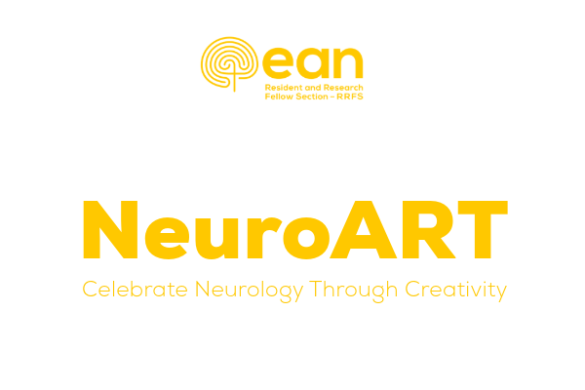Dr Tom Jenkins, Editor-in-chief, EAN website
Professor Claudio Bassetti introduced the Five Presidents Symposium on sleep disorders on Saturday morning, co-chaired with Professor Ulf Kallweit, with lectures given by the presidents of five major neurological associations: Professor James Stevens, past President of the American Academy of Neurology, Professor Claudia Trenkwalder, President of the Movement Disorders Society, Professor Birgit Hogl, President of the World Sleep Society, Professor Pierre Herve Luppi, President of the European Sleep Research Society, and our own EAN President, Professor Bassetti. Professor Bassetti first outlined the burden of sleep disorders, and the role of sleep in health, and Professor Kallweit pointed out the importance of training in sleep medicine for neurologists.
Professor Stevens gave the opening lecture on obstructive sleep apnoea (OSA) and cerebrovascular disease. He first outlined the classification of OSA severity, and that, whilst originally considered a disease associated with obesity, this is not always the case, prevalence is high and <25% are diagnosed. OSA is an independent risk factor for hypertension, and incidence of atrial fibrillation is doubled in people with OSA. There are strong associations between OSA and stroke risk confirmed on meta-analysis, especially in males. Cardiovascular mortality is higher in patients with untreated OSA, and OSA is prevalent after stroke and associated with worse outcomes. Although continuous positive airways pressure (CPAP) ventilation in these patients improves symptoms, it is not yet proven to influence vascular outcomes, although this may have been related to limitations of the trials. Future trials addressing this important issue are in the pipeline. The importance of thinking about and screening for OSA was emphasised.
Professor Trenkwalder spoke on rapid eye movement sleep behaviour disorder (RBD) and associations with neurodegenerative disease. First described in 1986 as “violent moving nightmares”, diagnosis can be clinical and is confirmed on polysomnography with documentation of rapid eye movement (REM) sleep without atonia. It is recognised as an early marker for synucleinopathy, appearing 10-15 years prior to diagnosis of a neurodegenerative syndrome, increasing risk of Parkinson’s disease 130 times. RBD is commonly associated with hyposmia, which appears to be due to alpha-synuclein deposition in the olfactory mucosa. Risk of multiple system atrophy and Lewy body dementia is also increased. DAT scans and MRI techniques sensitised to detect neuromelatonin may help stratify risk of conversion. Whilst a quarter of patients with Parkinson’s disease had RBD at diagnosis, smaller sleep movements not yet fulfilling criteria for RBD may be evident earlier, now termed prodromal RBD.
Professor Bassetti presented on narcolepsy, described as an immune-mediated hypothalamic disease. Whilst usually presenting in adolescence, there is a second peak in later life. It is usually idiopathic, or more rarely familial or secondary to structural pathology often in the hypothalamus. The core clinical feature is sleep-wake disturbance, with (NT1) or without cataplexy (NT2). Sleep paralysis, hallucinations and other sleep disorders are other features. Less classical features are increasingly recognised, such as cognitive and emotional symptoms, obesity and autonomic disturbance. Sleep-onset REM periods are supportive but neither 100% sensitive nor specific. CSF hypocretin (orexin) is reduced in >90% of patients with NT1 but fewer in NT2. There are strong associations with the HLA-DQB*06:02 haplotype, evident in 96-98% of people with NT1 (although this haplotype is seen in up to a third of healthy controls as well). However, twin concordance is only 20-35%, so environmental factors are also considered important; infections have been implicated. Recently, a major breakthrough was the identification of autoreactive T-cells to hypocretin epitopes. The current hypothesis is that a genetic predisposition is followed by environmental insults, and activated memory T cells destroy cells of the lateral hypothalamus. Diagnosis is clinical, supported by sleep studies. In some, but not necessarily all, cases, cranial MRI and CSF orexin may be indicated. A recent EAN guideline on management was released; recommendations include modafinil, pitolisant and solriamfetol for excessive sleepiness, and venlafaxine, sodium oxybate and pitolisant for cataplexy.
Professor Hogl discussed restless legs syndrome. Multiple genes are implicated in risk, along with environmental factors such as iron deficiency; mitochondrial iron deficiency appears important. Evidence of hyperexcitability of cortical leg motor regions has been identified on transcranial magnetic stimulation studies, cortical thinning is evident in sensorimotor areas on MRI, and functional connectivity is affected. Changes in peripheral nerves are also reported. If ferritin is <300ug/L in RLS of moderate severity or worse, iron supplementation is recommended in guidelines as first-line treatment. Low doses of dopaminergic agents are recommended to avoid augmentation (worsening of symptoms with treatment).
Professor Luppi concluded the session with a lecture entitled: Is paradoxical (REM) sleep a motor state? Early animal studies identified that muscle atonia in paradoxical sleep was generated by a brainstem circuit. Lesions in the sublaterodorsal (SLD) tegmental pontine nucleus resulted in loss of inhibition and excessive motor activity seen in RBD. Work from these early studies has subsequently been extended using new genetic rodent models; glutaminergic, glycinergic and GABAergic neurons are implicated. Using a mouse model to differentiate neurons activated during normal waking and paradoxical sleep, cortical activity was identified to be much higher in normal waking, except in the dentate gyrus of the hippocampus.











